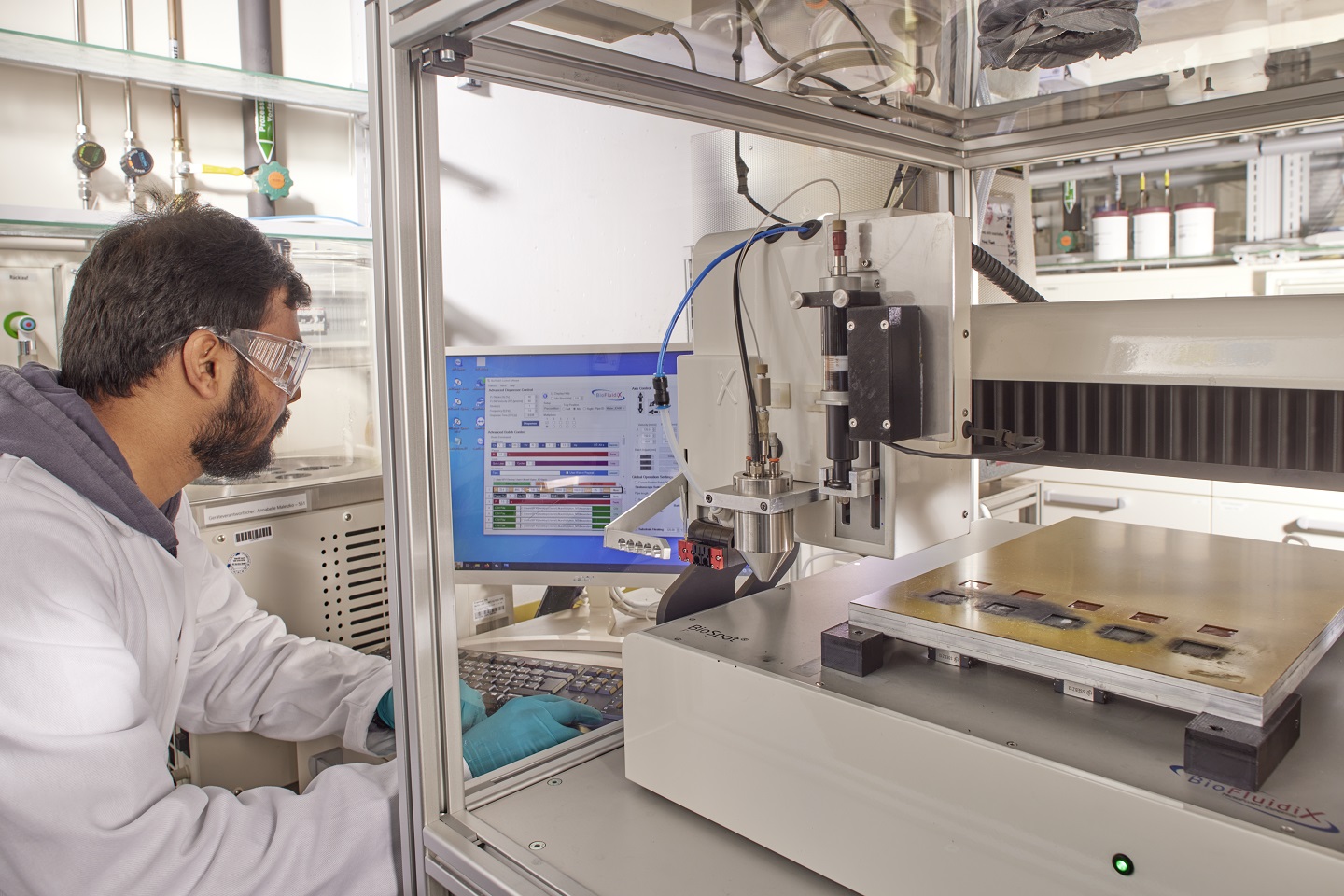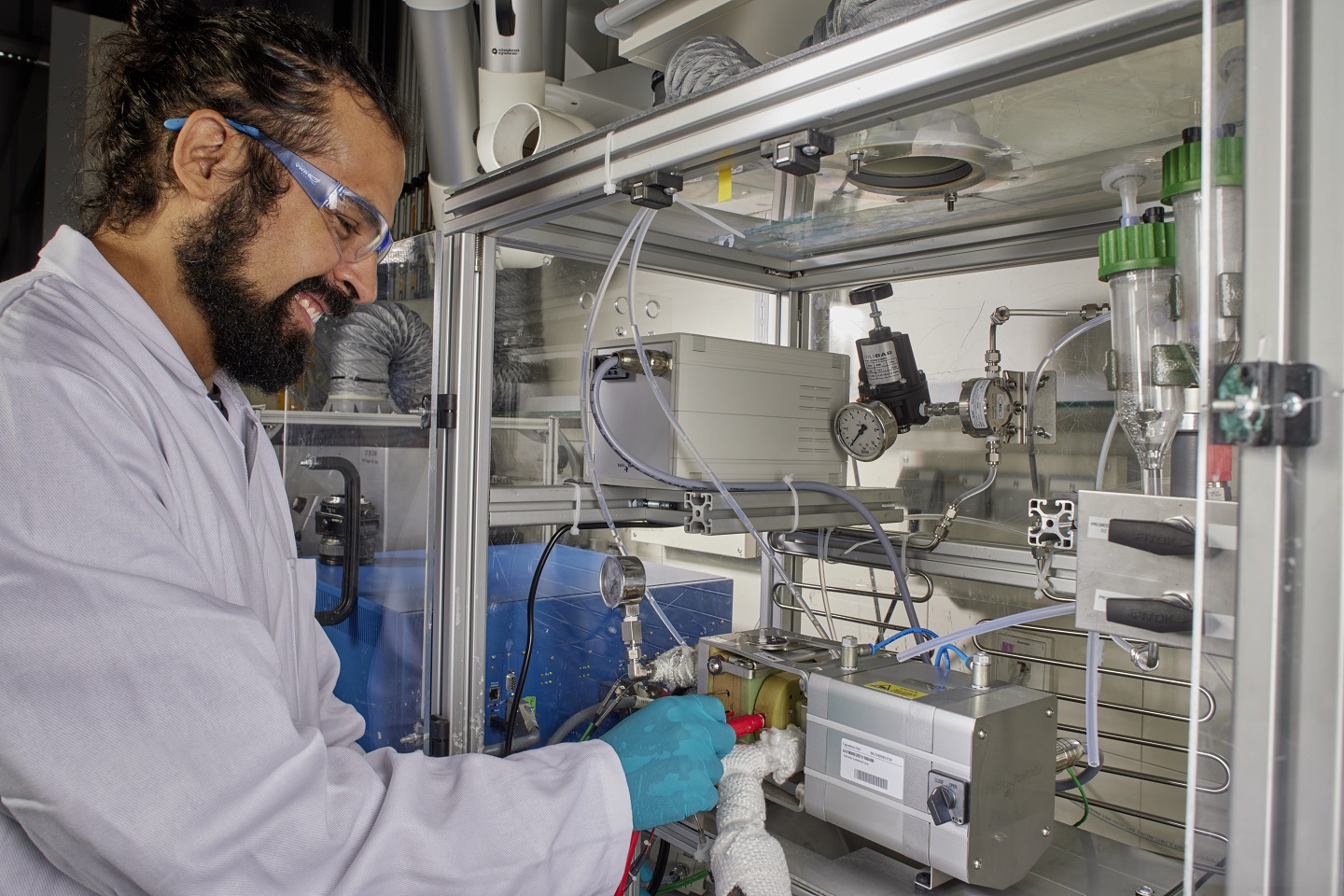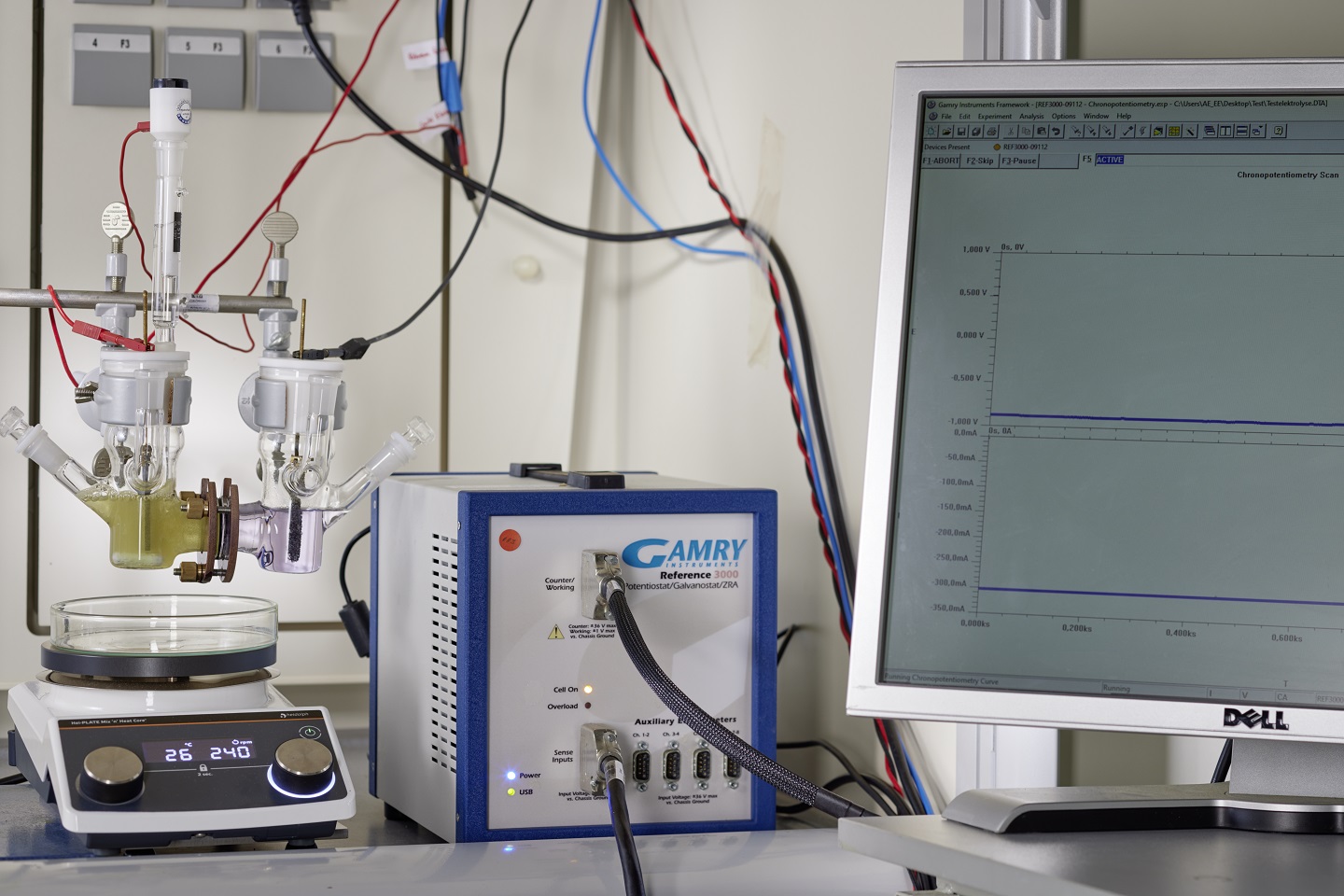Renewable electrical energy can be used directly in electrochemical processes to produce hydrogen and other chemicals. The electrochemical processes largely fulfil the criteria of "green chemistry" and enable new synthesis routes.
Electrolysis and electrosynthesis
Catalyst and electrode development
Catalysts and their syntheses are customized for specific applications using structure-property correlation. We also scale up catalyst syntheses to make sufficient materials available for electrode production. We can produce electrodes using spay coating, electrospinning, electrodeposition, or slot-dye coating.
Testing
We can test membrane electrode units or individual components such as porous transport layers (PTLs). We have test rigs for polymer electrolyte membrane electrolysis (PEMEL) and alkaline electrolysis, which are equipped with various test cells and online analytics.
Feasibility studies and process development
We can analyse electroorganic syntheses in various electrochemical cells (RDE, H-type or flow cell). We can perform a comprehensive range of accompanying analyses (HPLC-DAD-MS, GC-MS, IR, Raman, (2D)-NMR, online UV-VIS) to determine the selectivity and efficiency of the electrosynthetic reaction. Based on these findings, we build prototypes and design the system.
 Fraunhofer Institute for Chemical Technology ICT
Fraunhofer Institute for Chemical Technology ICT

